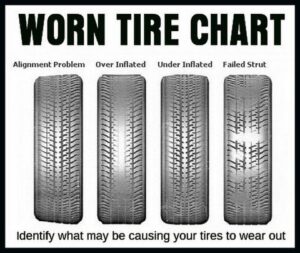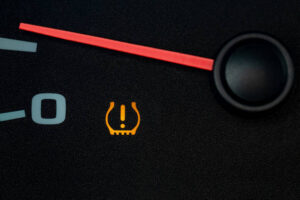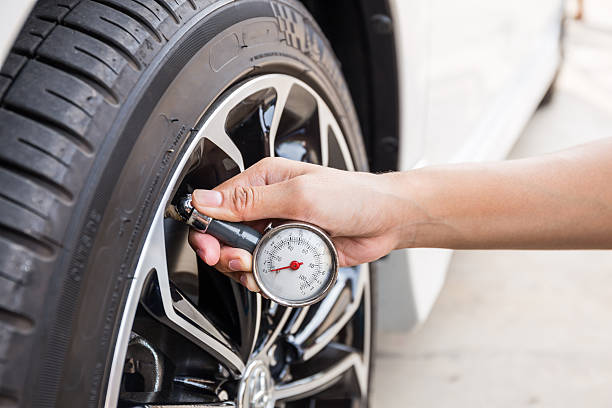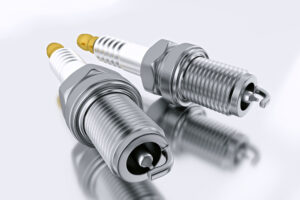When it comes to vehicle maintenance, one of the most overlooked—but absolutely essential—factors is tyre pressure. Many drivers check their oil, clean their windshields, and maybe even rotate their tyres, but forget to regularly check the air pressure in those tyres. Yet, improper tyre pressure can lead to serious safety issues, increased fuel consumption, faster tyre wear, and even complete tyre failure.
In an earlier post, we discussed the different causes of tyre failures, how to prevent them, and what to do when it happens. you can read all about that here
Whether you’re navigating the hot, pothole-ridden streets of Lagos or cruising on smooth highways in Europe or North America, tyre pressure plays a critical role in your vehicle’s performance and your safety. In this article, we’ll explain why tyre pressure is so important, what happens when it’s too high or too low, how to check it, and what the ideal pressure should be.
Why Tyre Pressure Matters More Than You Think
Tyres are your car’s only contact with the road. Maintaining the correct pressure ensures they perform as designed. Here’s what proper tyre pressure affects:
- Safety: Incorrect tyre pressure compromises your vehicle’s handling and braking. Under-inflated tyres can overheat and potentially blow out. Over-inflated tyres reduce grip and make your car more prone to skidding.
- Fuel Efficiency: Under-inflated tyres increase rolling resistance, meaning your engine works harder and burns more fuel. Proper inflation helps save money at the pump.
- Tyre Lifespan: When tyres are improperly inflated, they wear unevenly and wear out faster. That’s more money spent on replacements.
- Environmental Impact: More fuel consumption and more frequent tyre replacement contribute to your carbon footprint. Keeping tyre pressure in check is good for your wallet—and the planet.
What Happens When Tyre Pressure Is Too Low?
Under-inflation is more common than over-inflation and has more serious consequences. Here’s what happens when you drive with low tyre pressure:
- Increased Tyre Wear: The tyre edges wear out faster than the center.
- Poor Handling: Your car may feel sluggish or difficult to steer.
- Reduced Braking Efficiency: It takes longer to come to a full stop.
- Higher Risk of Blowouts: Heat builds up more easily, especially on hot roads, leading to tyre failure.
What Happens When Tyre Pressure Is Too High?
Over-inflating your tyres isn’t safer either. Here’s why too much air is just as bad:
- Reduced Grip: The tyre’s contact patch with the road shrinks, reducing traction.
- Uneven Tyre Wear: The center wears out faster than the edges.
- Harsher Ride: Your vehicle feels bumpier and less comfortable.
- Higher Risk on Wet Roads: With reduced traction, skidding and hydroplaning are more likely.
How Tyre Pressure Affects Tyre Wear Patterns
Tyre pressure doesn’t just impact safety and fuel consumption—it also affects how your tyres wear out over time. If your tyres are not properly inflated, they will wear unevenly, reducing their lifespan and affecting your car’s handling. Here’s how it works:
When your tyres are under-inflated, the outer edges of the tyre (the shoulders) make more contact with the road than the centre. This causes the edges to wear out faster while the middle remains relatively untouched. In the long run, this leads to tyre overheating, increased rolling resistance, and a higher risk of tyre failure—especially in hot weather.
On the other hand, over-inflated tyres wear out the centre tread much faster than the sides. Because there’s too much air pressure, the tyre becomes overly stiff and the centre is forced to bear the brunt of the load. This reduces grip and makes your ride bumpier, especially on uneven roads.
Properly inflated tyres wear evenly across the entire tread surface. This means the tyre is making full contact with the road as intended, which provides better traction, improves braking, extends the tyre’s lifespan, and maximizes fuel economy.

How to Check Your Tyre Pressure
Checking your tyre pressure is a quick process that can save you from major issues down the line. Here’s how:
- Get a Tyre Pressure Gauge: You can find digital or manual ones at any auto parts store.

Pressure gauge. - Know Your Recommended PSI: Check the inside of your car’s driver-side door or your owner’s manual. Most cars have a recommended pressure between 30–35 PSI.
- Check When Cold: Tyres heat up when driven, so always check pressure when the car has been parked for at least 3 hours.
- Unscrew the Valve Cap: Press the gauge onto the valve and read the pressure.
- Adjust as Needed: Add air using a pump or release air if it’s too high.
How Often Should You Check Your Tyre Pressure?
Experts recommend checking tyre pressure at least once a month and before any long trips. If you’re in a country with temperature fluctuations—such as Canada, the UK, or northern Nigeria—check more frequently, as pressure drops in cold weather.
Understanding Temperature and Altitude Effects
Temperature has a direct effect on tyre pressure. For every 10°C (18°F) change in temperature, tyre pressure can shift by about 1 PSI. So if you inflated your tyres during harmattan in Nigeria or winter in the UK, they may be overinflated by the time the hot season or summer rolls in.
Altitude also affects pressure readings. At higher altitudes, atmospheric pressure is lower, so tyres may seem more inflated than they really are. Keep this in mind if you travel between cities or regions with different altitudes.
Using Tyre Pressure Monitoring Systems (TPMS)
Many modern vehicles come with TPMS—Tyre Pressure Monitoring Systems. These sensors alert you when pressure is too low (and sometimes too high). But don’t rely on them alone. TPMS systems usually trigger only when pressure is dangerously low, not when it’s slightly off but still unsafe.

Tyre Pressure and Fuel Consumption—A Real-World Impact
According to the U.S. Department of Energy, under-inflated tyres can lower fuel economy by about 0.2% for every 1 PSI drop in all four tyres. In Nigeria, where fuel costs are rising and availability can be inconsistent, and in places like the UK where fuel is heavily taxed, maintaining pressure can lead to real savings over time.
Tyre Pressure in Nigeria vs. Other Climates
In hot regions like Nigeria, tyres can expand quickly. So it’s important not to overinflate during the morning, as pressure will rise during the day with heat. Meanwhile, in colder countries like Canada, the opposite happens—tyres deflate as temperatures drop, requiring more frequent top-ups.
Common Mistakes to Avoid
- Using the Maximum PSI on the Tyre: This number is the max pressure the tyre can handle, not the ideal one for your vehicle.
- Ignoring the Spare Tyre: Always check your spare—many people forget, only to be stranded later with a flat spare tyre.
- Skipping Monthly Checks: Make it a habit, just like checking your oil or coolant.
Don’t wait for a warning light—check your tyre pressure today!
Your safety, fuel savings, and tyre lifespan depend on it.
If you’re not sure about the right pressure for your car or need help with proper maintenance, speak to your local tyre professional—or follow us for more simple, practical car care tips.
👉 Subscribe to our newsletter for weekly tips, or explore more guides on keeping your car road-ready




